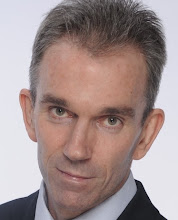Deep down many images of the future are really shallow. That's a play on an old joke, but let me explain.
Futures are not simply dry scenarios, not merely the compact, politically correct visions of policy makers and government think tanks. They are the images which fire our hopes and dreams within the present. Futures, whether preferred, probable, or possible, can call us to action, and can inspire us to reach higher and further. Human beings do not respond well to dry, empirical data. If that were the case, data for increasing greenhouse emissions would have seen a much greater shift in consumer awareness than we have observed. We human beings need something to be passionate about, something that gives us meaning and hope, something that brings us into deep relationship with each other, the world, and Gaia. They employ other ways of knowing and permit the use of intuition and exploration of inner worlds.
To summarise, futures with depth contain these elements:
- They inspire. They instill us with passion, and ignite something deep within us.
- They are the big picture. They encourage us to see things in broader perspective, including the cultural, national, civilisational, the Gaian, and the spiritual.
- They honour both the head and the heart. They permit rational and intuitive ways of knowing and living to co-exist.
- They permit expression of multiple cultures and worldviews, not just dominant ones
- They are deeply meaningful, not merely interesting, amusing, or engaging
- They permit deep connection with each other, with nature, and with inner and spiritual worlds
- They honour universal human values: peace, beauty, freedom, justice, and love (including freedom of thought and information, and financial freedom).People and Gaia lie at the heart of the future, not merely money and machines.
All futures work is embedded within worldviews and paradigms, and this typically includes implicit hegemonies. The other becomes part of the disowned future. Like so many civilisations, the Western critical/rational worldview tends to see its version of social expression as a result of ineluctable historical forces - in this case the march of progress away from superstition and the primitive and toward the rational and technological. Many non-Western countries have adopted a version of this worldview as their preferred future. Chinese central government policy makers, for example, have developed the model of "scientific development", which, in practice, is extreme capitalism without democracy. Yet futures centred within the critical/rational worldview are but one expression of multiple possible futures. A key role of the postconventional futurist is to offer provocative alternatives.
The concept of Deep Futures is effectively a synthesis of the critical/rational and mystical/spiritual worldviews. The concept of DF is broadly representative of the philosophical perspective of postconventional futurists in general. Deep Futures is therefore no less “subjective” than any other expression of Futures.
The kind of science, education, and culture that we have developed in modern society make us proficient at analysing, classifying, and experimenting. But we are not so good at putting things back together, at identifying what is important, what is moral, what is great. Deep Futures, as I see it, has a prime aim of bringing together rational and intuitive thinking, to assist us in developing minds and futures that can help us thrive in a dynamic and rapidly changing world.
Marcus













No comments:
Post a Comment